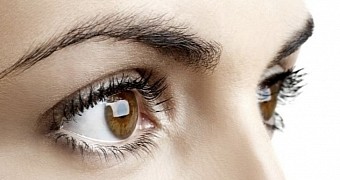This September 12, a woman was implanted retinal tissue grown from her own skin. The intervention, hailed as a world first, was carried out at Japan's Institute of Biomedical Research and Innovation Hospital and took 2 hours to complete.
Information shared with the public says the procedure went well and that the patient appears to be well on her way to recovery. This is all the more impressive given the fact that she is in her 70s, the doctors monitoring her say.
Why grow retinal tissue from skin cells
The specialists who performed the procedure explain that the woman, whose name has not been shared with the public, was suffering from poor eyesight as a result of age-related retinal tissue degeneration. One possibility was to replace the damaged cells with embryo-derived ones.
However, this practice is currently highly controversial, chiefly because of concerns having to do with ethics. Hence, scientists turned to growing retinal tissue not from embryo-derived cells, but from skin, Nature details.
As explained by eye specialist Yasuo Kurimoto with the Kobe City Medical Center General Hospital and colleagues, growing retinal tissue from a patient's own skin cells is not only preferable ethics-wise, but also safer, seeing how the risk of rejection is lower.
How does one turn skin cells into eye tissue?
In order to put together the 1.3 by 3.0 millimeter sheet of retinal tissue that was transplanted into the Japanese woman's eye this past September 12, specialist Masayo Takahashi started by harvesting skin cells, which she then manipulated into becoming induced pluripotent stem cells.
Having obtained these induced pluripotent stem cells, the RIKEN Center for Developmental Biology scientist toyed with them and compelled them to turn into retinal cells. These retinal cells were then put together and made to form the sheet of tissue.
“We've taken a momentous first step toward regenerative medicine using iPS cells,” Masayo Takahashi tells the press in an interview. “With this as a starting point, I definitely want to bring [iPS cell-based regenerative medicine] to as many people as possible,” she adds.
It's important to note that, prior to implanting skin cell-derived retinal tissue into this patient's eye, the procedure was tested on laboratory mice and monkeys. This studies confirmed that the transplanted retinal tissue would not be rejected or end up forming tumors.
Not yet a treatment option through-and-through
The bad news is that the retinal tissue that the elderly Japanese woman received this past September 12 has little chances to do anything to restore her eyesight. This is because the eye degeneration that forced her to seek medical help boiled down to the destruction of the retinal epithelium, which is a layer of cells on which photoreceptors are located.
Then again, specialists say that the end goal of this intervention was not so much to repair the woman's eyes and make it seem like they never experienced any kind of degeneration, but to check whether or not the transplanted tissue could prevent further retina destruction from occurring.

 14 DAY TRIAL //
14 DAY TRIAL //